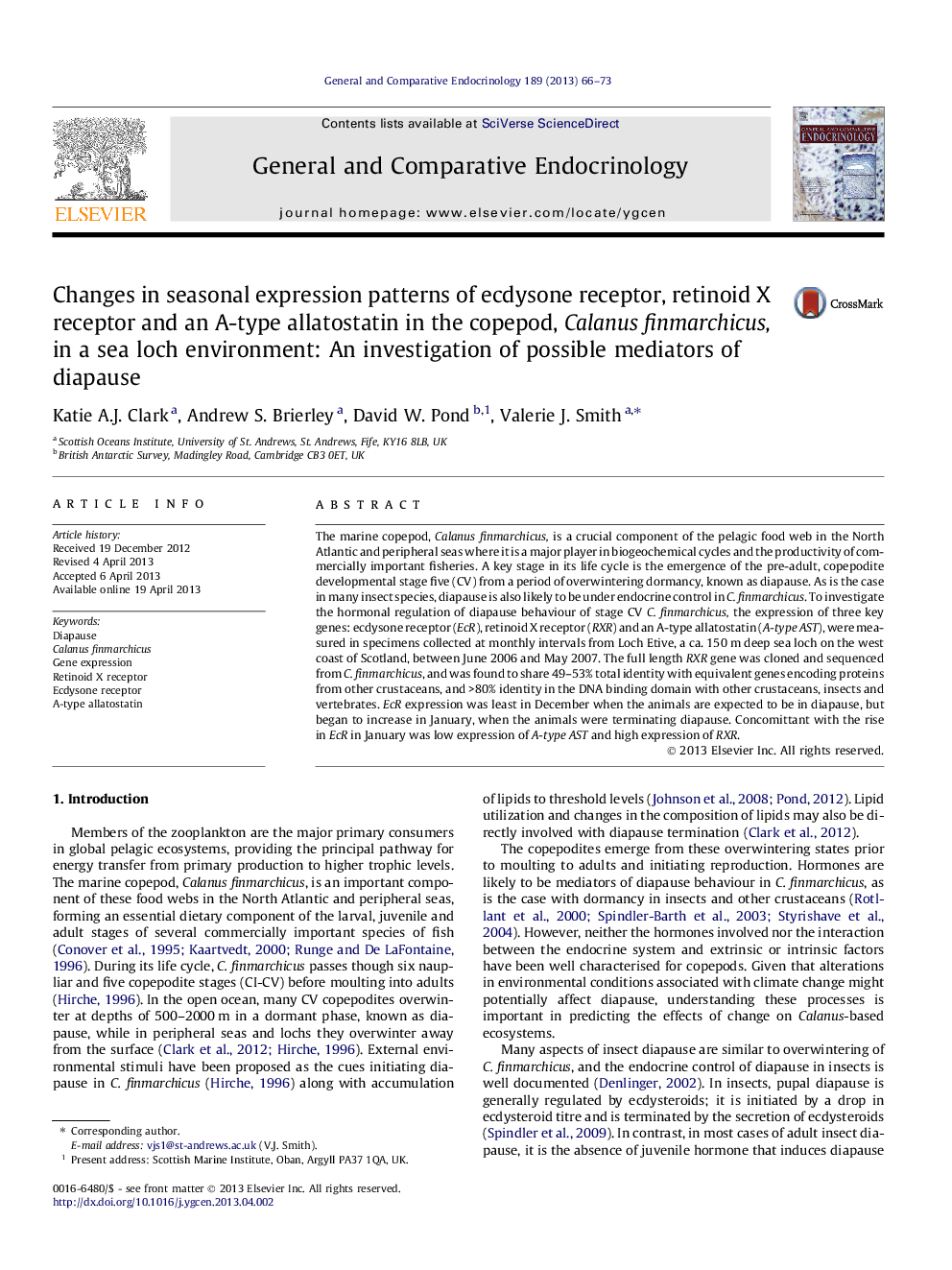| کد مقاله | کد نشریه | سال انتشار | مقاله انگلیسی | نسخه تمام متن |
|---|---|---|---|---|
| 5901424 | 1568916 | 2013 | 8 صفحه PDF | دانلود رایگان |

- The full length RXR gene was cloned and sequenced from C. finmarchicus.
- Expression of RXR, EcR and AST genes change seasonally.
- The changes match patterns expected for a role in diapause.
- EcR was least during diapause, AST was least as diapause terminates but RXR was highest.
The marine copepod, Calanus finmarchicus, is a crucial component of the pelagic food web in the North Atlantic and peripheral seas where it is a major player in biogeochemical cycles and the productivity of commercially important fisheries. A key stage in its life cycle is the emergence of the pre-adult, copepodite developmental stage five (CV) from a period of overwintering dormancy, known as diapause. As is the case in many insect species, diapause is also likely to be under endocrine control in C. finmarchicus. To investigate the hormonal regulation of diapause behaviour of stage CV C. finmarchicus, the expression of three key genes: ecdysone receptor (EcR), retinoid X receptor (RXR) and an A-type allatostatin (A-type AST), were measured in specimens collected at monthly intervals from Loch Etive, a ca. 150Â m deep sea loch on the west coast of Scotland, between June 2006 and May 2007. The full length RXR gene was cloned and sequenced from C. finmarchicus, and was found to share 49-53% total identity with equivalent genes encoding proteins from other crustaceans, and >80% identity in the DNA binding domain with other crustaceans, insects and vertebrates. EcR expression was least in December when the animals are expected to be in diapause, but began to increase in January, when the animals were terminating diapause. Concomittant with the rise in EcR in January was low expression of A-type AST and high expression of RXR.
Journal: General and Comparative Endocrinology - Volume 189, 1 August 2013, Pages 66-73